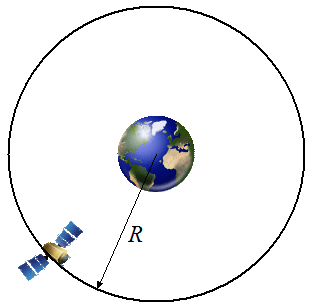Motion: Displacement
Motion
1. A body is said to be in motion if it changes its position with time with respect to the observer.
e.g. When a tree T is observed by an observer A sitting on a bench, the tree is at rest. This is because the position of the tree is not changing with respect to the observer A.
Now when the same tree T is observed by an observer B sitting in a train moving with a velocity V, then the tree is moving with respect to the observer B because the position of the tree is changing with respect to the observer B.
So we always need a reference point to explain the motion. In case 1, the reference point is the observer A, while in second case, reference point may be observer B.

Type of Motion
(i) Linear motion
(ii) Circular motion
(iii) Vibratory motion
(i) Linear motion:-
The motion of a body is said to be linear motion If the body moves in a straight line or path.
e.g. Motion of a moving car on a straight road.
Motion of a ball dropped from the roof of a building.
(ii) Circular Motion: –
The motion of a body is said to be circular motion if the body moves around a fixed point.
e.g Motion of an electric fan
Motion of a spinning top

(iii) Vibratory motion: –
The motion of a body is said to be vibratory motion if the body moves to and fro about a fixed point.
e.g. Motion of a pendulum
Motion of a swing
Nature of Motion
(i) Uniform motion
(ii) Non- uniform motion.
(i) Uniform motion: –
The motion of a body is said to be uniform if the body covers equal distance in equal interval of time.
e.g.
(ii) Non- Uniform motion: –
The motion of a body is said to be non-uniform if the body covers unequal distances in equal interval of time.
eg.
Scalar quantity:
The physical quantity which has only magnitude and no sense of direction is called scalar quantity.
e.g. distance, speed , time, work, etc.
Vector quantity: –
The physical quantity which has both magnitude as well as direction is called vector quantity.
e.g. displacement, force, momentum, etc.
Distance: –
The actual length of path covered by a moving body between its initial and final position is called the distance covered by the body. It has no sense of direction.
It is a scalar quantity and its S.I. unit is meter (m)
Displacement:
The shortest distance between the initial and final position of a moving body is called the displacement of the body and is directed from the initial to the final position
It is a vector quantity & its S.I unit is metre (m)
Distance will be equal to displacement if the body moves in a straight line, otherwise distance will be greater than displacement
Difference between distance and displacement
|
Distance |
Displacement |
|
1. The actual length of path covered by a moving body between its initial and final position is called the distance covered by the body. 2. It has no sense of direction. 3. Distance is a scalar quantity. 4. It is always positive. 5. It can not be zero for a moving body. |
1. The shortest distance between initial and final position of a moving body is called the displacement of the body and is directed from initial to final position 2. Direction is associated with displacement. 3. Displacement is a vector quantity. 4. It can be positive or negative. 5. It can be zero if initial an final position of the body is same. |